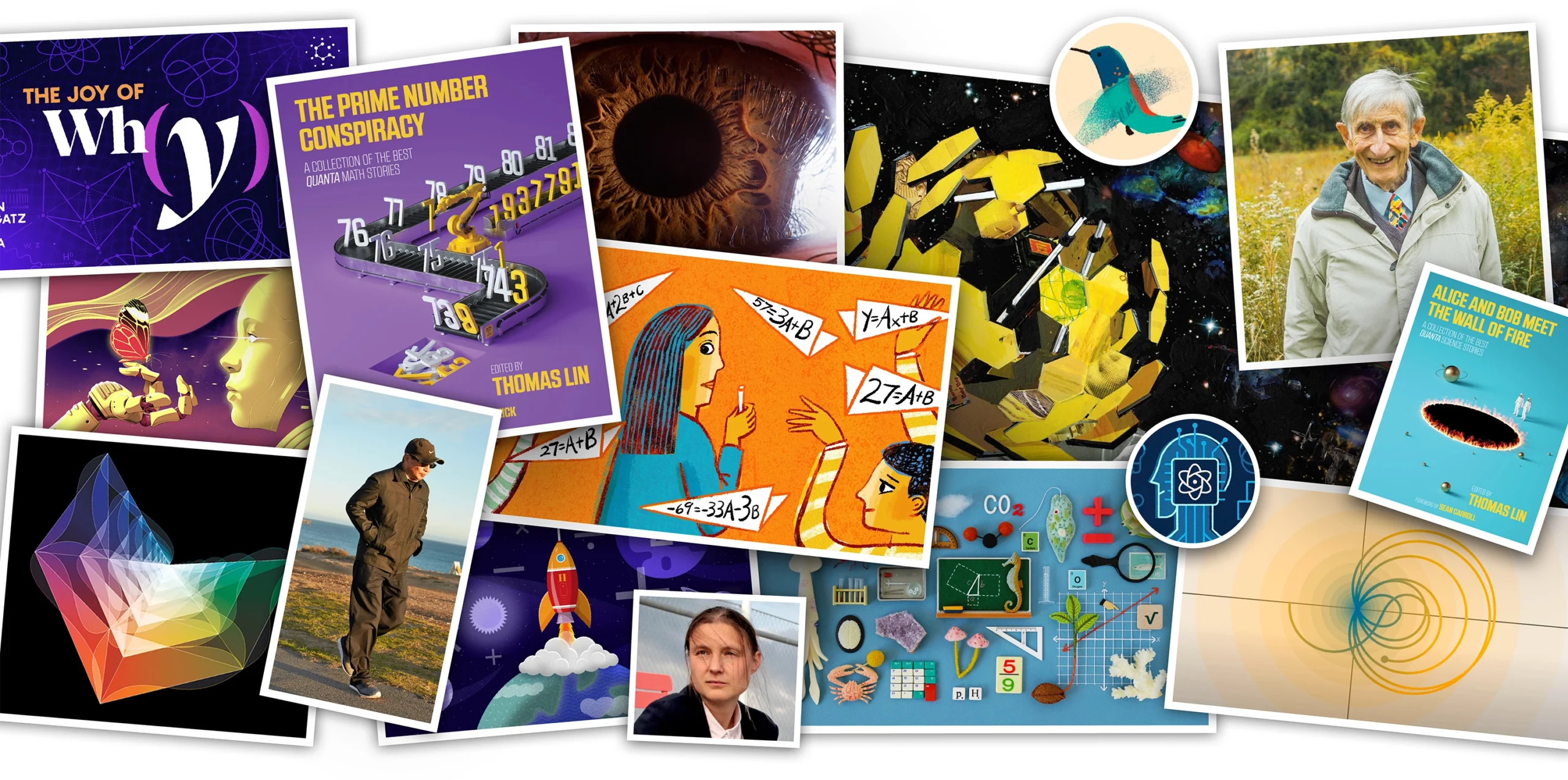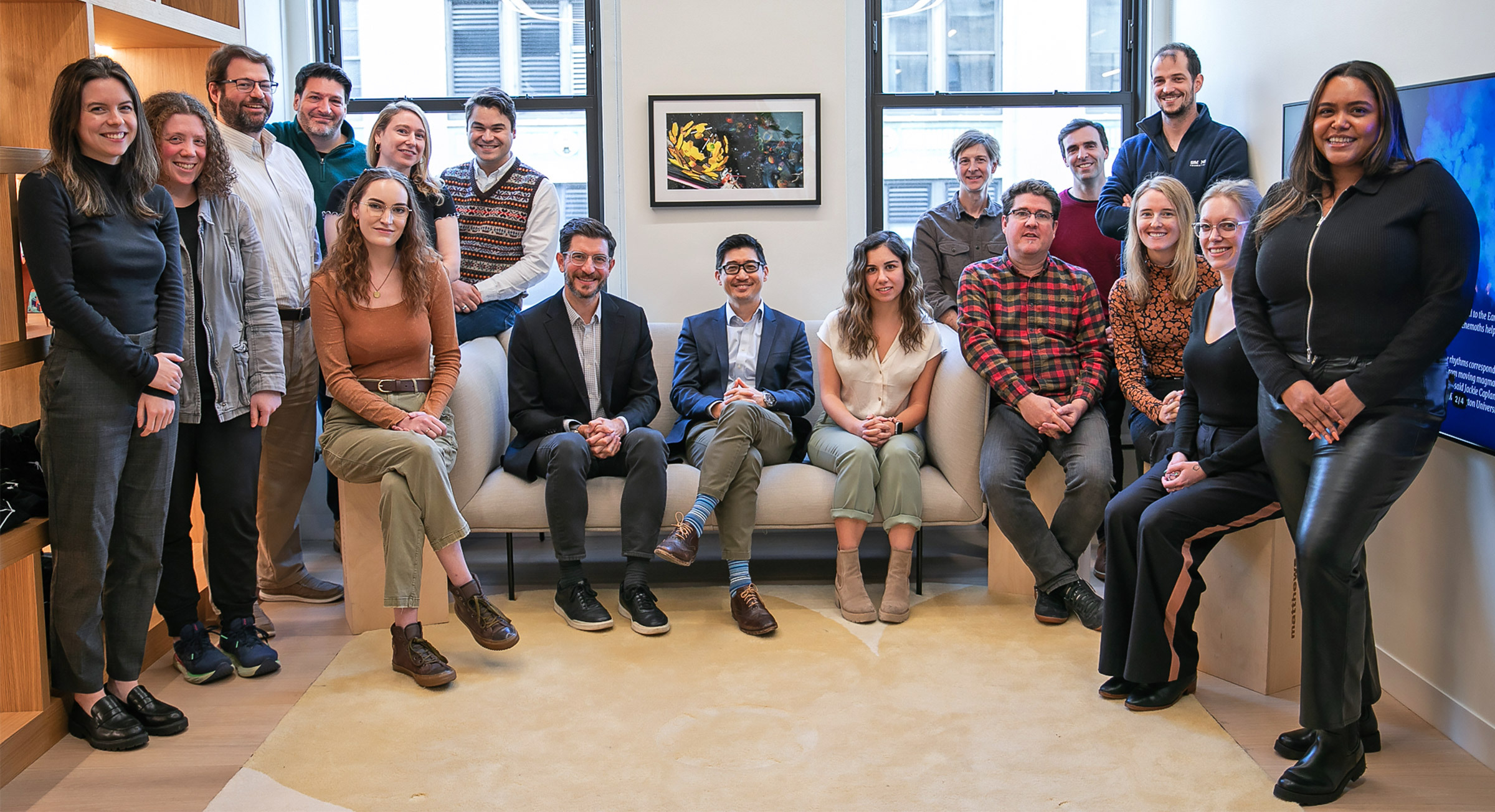My Fantastic Voyage at Quanta Magazine

Quanta Magazine
Introduction
Dear Readers,
Last July, I read this memo to the staff and explained why I had made the difficult decision to move on from my role as Quanta’s editor-in-chief. This magazine has meant everything to me since I pitched the concept to the Simons Foundation in 2012. Building, growing, nurturing and leading the publication and staff — and being a part of what we’ve collectively accomplished — has been the most remarkable and rewarding experience of my career. And it’s been especially gratifying to see valued Quanta readers like you multiply twentyfold over the past decade, with many millions more engaging with our science and math content on social media and YouTube, and through our podcasts and in translated reprintings around the world.
Today marks my last day at the magazine. Starting Monday, April 15, Samir Patel — most recently the editor-in-chief of Atlas Obscura — will lead Quanta’s newsroom. I hope you’ll join me in welcoming him and that you’re as eager as I am to see how the magazine evolves and grows under his leadership. For my part, I will share what I know about what’s worked and what hasn’t while rooting for him and the entire team to take Quanta to new heights.
When you leave a person, place or job that holds deep meaning, it isn’t always easy to look back. But when I look back, I’m reminded of so many happy moments which this letter is too short to contain. Please allow me to highlight just a few, and apologies in advance for the sentimentality and inevitable omissions. I’ll start with May 2013, when Quanta was in its earliest incarnation as Simons Science News. One day, contributing math writer Erica Klarreich alerted me to the fact that an unheralded lecturer had solved a major problem about bounded prime number gaps. Knowing it could be covered in The New York Times’ online science section the following Monday, I worked through the weekend with Erica and published our piece on Sunday evening. The next morning, while attending a workshop, I received an urgent call from our web developer: The site had been brought down by a massive traffic spike to the article. (We promptly scaled up server resources.)
That summer, we renamed the magazine Quanta and announced the new name alongside Carl Zimmer’s in-depth look at the origins of life’s complexity, which was co-published in Scientific American’s print magazine. In the fall, Natalie Wolchover’s brain-bending article about a jewel-like geometric object called an amplituhedron went so viral that Conan O’Brien referenced it in his opening monologue — and promptly turned it into a marijuana joke. Soon after, I interviewed Freeman Dyson at the Institute for Advanced Study, directed a video based on that interview and led our exclusive coverage of the 2014 Fields medalists, which included Erica’s terrific profile of Maryam Mirzakhani, the first woman to win math’s most prestigious honor.
In 2015, Natalie and I collaborated with founding art director Olena Shmahalo and interactive designer Emily Fuhrman to build Quanta’s first immersive visual explainer mapping out fundamental questions and proposed solutions in theoretical physics. It remains one of the most popular features we’ve published. That same year, I partnered with the physicist David Kaplan to create the In Theory video series, leading off with a delightful explainer about the black hole information paradox and capping the initial series with a VR tour around our solar system that was later converted into a planetarium show.

Quanta’s staff in November 2023, from left: Madison Goldberg, Jordana Cepelewicz, Bill Andrews, Samuel Velasco, Kristina Armitage, Emily Buder, Matt Carlstrom, Michael Moyer, Thomas Lin, Yasemin Saplakoglu, Merrill Sherman, Christopher Webb Young, Charlie Wood, Nona Griffin, Ben Brubaker, Hannah Waters and Arleen Santana.
Emily Tan/Simons Foundation
In 2016, I joined Natalie, Siobhan Roberts and Emily Singer in profiling four master science and math teachers as part of an education series that included video vignettes produced by my former New York Times colleague Lisa Iaboni, an interactive survey of readers’ experiences with math and science built by Emily Fuhrman, my interview with the theoretical particle physicist and science education reformer Helen Quinn, and Kevin Hartnett’s smart analysis of the Common Core math standards.
In 2017, we launched a completely redesigned magazine site, which won a Webby People’s Voice Award for best science website a few years later. Since 2017, I’ve enjoyed revisiting high school math concepts and gaining a better appreciation for their connection to modern research while editing Patrick Honner’s entertaining Quantized Academy columns. In 2018, I had the privilege of editing two collections of Quanta articles that were published by the MIT Press. To promote the books, I moderated a wide-ranging panel discussion featuring Natalie, Kevin, deputy editor John Rennie and the mathematical physicist Robbert Dijkgraaf (then the director of the Institute for Advanced Study, and now the minister of education, culture and science in the Netherlands), and got to meet a few hundred of you in person.
In early 2020, Kevin and deputy editor Michael Moyer led the development of our expansive and enticing interactive map of mathematics. Later that year, I relished the collaborative fusion of mathematical, visual and editorial ideas that the number theorist Alex Kontorovich, senior video editor Emily Buder and I brought to our Riemann hypothesis video. I remember the excitement when Quanta won a National Magazine Award for general excellence during the height of the Covid-19 pandemic (when we needed something to be excited about), and how over the moon we were to learn that the magazine had won a Pulitzer Prize for explanatory reporting in 2022 for the standout package on the James Webb Space Telescope by Natalie and her colleagues. Also in 2022, I traveled to Lausanne, Switzerland, to interview Maryna Viazovska, the second woman to win a Fields Medal, and had the pleasure of co-writing the profile with longtime collaborator Erica Klarreich.
Over the last few years, one of my great joys has been working with Steve Strogatz, John, art director Samuel Velasco and senior engagement editor Matt Carlstrom — and this past year with co-host Janna Levin — on the Joy of Why podcast. And it’s been an absolute blast designing and building our Hyperjumps math game with Samuel and interactive developer Paul Chaikin based on a concept by puzzle columnist Pradeep Mutalik.
These memories, and so many more, have reinforced an obvious fact about the world that has nonetheless been marvelous to experience — that when the right people get together at the right time, good things happen. It all started with Marilyn and Jim Simons, who took a chance on my unconventional ideas and whose steadfast support made Quanta possible. I’m grateful to current foundation president David Spergel for his enthusiastic commitment to the journalism we do. I can’t thank our distinguished advisory board members enough for their generous advice over the years. And none of this is possible without the many talented reporters, editors, designers and producers that I’ve been lucky enough to call my fellow “Quanta’s mechanics.”
Looking ahead, I’m encouraged by the outstanding journalists who write for the magazine, headlined by our staff writers Jordana Cepelewicz (who wrote this brilliant profile of 2022 Fields medalist June Huh), Charlie Wood (our first writing intern in 2018), Yasemin Saplakoglu and Ben Brubaker.
I’d like to leave you and the team with one word that defines what Quanta means to me: service. By that I mean both public service — the beating heart that drives what we do and why we do it — and service to each other. Journalism is a team sport. As satisfying as it’s been to produce the kind of journalism I thought the world needed, I’m just as proud of the newsroom culture we’ve established, one of service to the public and to each other, of journalistic integrity and open collaboration. (I’m also proud that of the 169 Q&A interviews we’ve published, more than 50% feature women scientists and mathematicians. It meant the world to me when, at a public event with Steve Strogatz, a high school student told me how much those interviews have inspired her as a budding scientist.)
Why am I leaving now? In my memo to the staff, I said that the magazine is all grown up, and I pointed to the “spirit of learning more and seeking out new challenges.” Indeed, my initial vision for Quanta has been realized, and our exceptional team is well equipped to carry on our journalistic mission without this editor-, cheerleader- and worrier-in-chief. I also believe in change, in fresh ideas, and in making room for a new generation of leaders to rise to the challenge.
Not that I’m going very far. My new challenge is to build a science book imprint here at the Simons Foundation. Simply put, the goal is to do for book publishing what Quanta has done for science journalism. Some important details are still in development, so stay tuned for the official announcement. In the meantime, if you have a popular science book proposal you’d like us to consider, please send it to [email protected].
I hope Quanta has tickled your brain as much as it has mine, and that it will continue to do so for many earthly orbits to come.
Yours,
Thomas Lin
